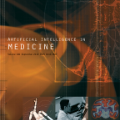Machine and deep learning survival models demonstrate similar or even improved time-to-event prediction capabilities compared to classical statistical learning methods yet are too complex to be interpreted by humans. Several model-agnostic explanations are available to overcome this issue; however, none directly explain the survival function prediction. In this paper, we introduce SurvSHAP(t), the first time-dependent explanation that allows for interpreting survival black-box models. It is based on SHapley Additive exPlanations with solid theoretical foundations and a broad adoption among machine learning practitioners. The proposed methods aim to enhance precision diagnostics and support domain experts in making decisions. Experiments on synthetic and medical data confirm that SurvSHAP(t) can detect variables with a time-dependent effect, and its aggregation is a better determinant of the importance of variables for a prediction than SurvLIME. SurvSHAP(t) is model-agnostic and can be applied to all models with functional output. We provide an accessible implementation of time-dependent explanations in Python at http://github.com/MI2DataLab/survshap.
翻译:与传统的统计学习方法相比,机器和深层次学习生存模型表明,时间到活动预测能力相似甚至得到改善,但与传统的统计学习方法相比,仍然过于复杂,难以由人类解释。有几个模型的不可知性解释可以克服这一问题;然而,没有直接解释生存功能预测。在本文中,我们介绍SurvSHAP(t),这是第一次能够解释生存黑盒模型的有时间依赖性的解释。SurvSHAP(t)基于Shanpley Additive Explansations,具有坚实的理论基础,在机器学习实践者中广泛采用。拟议方法的目的是加强精确诊断,支持领域专家做出决策。关于合成和医学数据的实验证实,SurvSHAP(t)能够检测具有时间依赖效应的变量,其汇总比SurvLIME更好地决定变量对预测的重要性。SurvSHHAP(t)是模型-agnovSHAP(t),可以应用于具有功能性输出的所有模型。我们在Python提供基于时间的解释。我们在http://github.com/MI2DataLab/survshapshap/surshappp。




